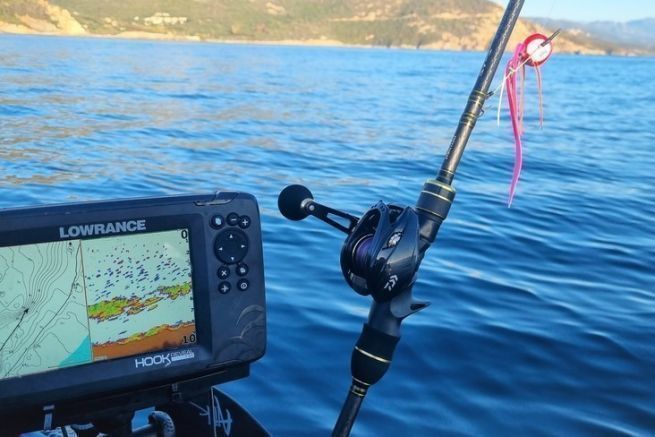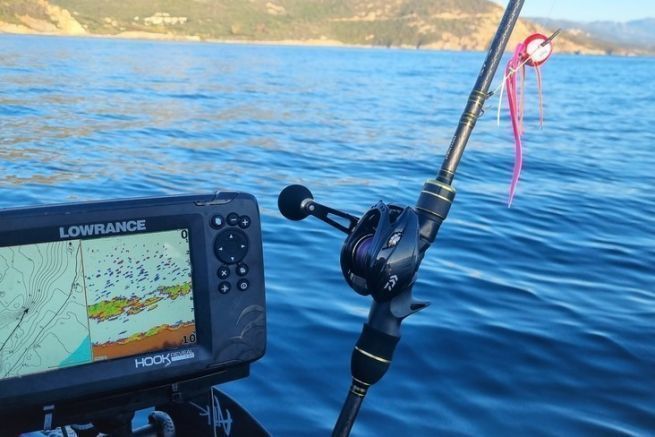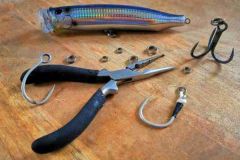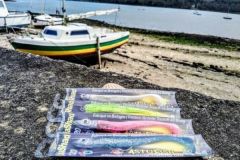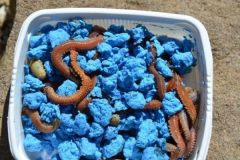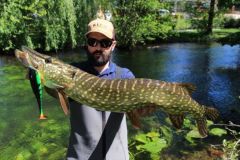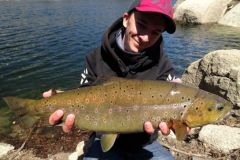The cane
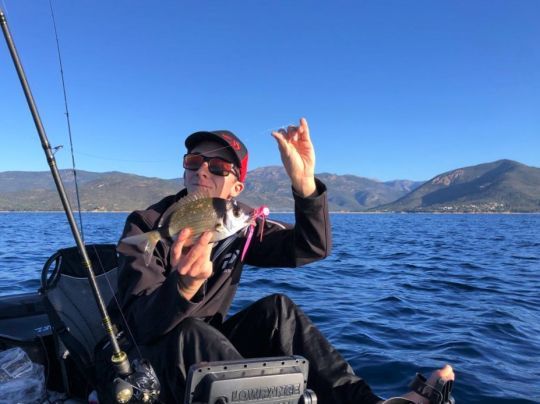
The rods dedicated to fishing with baits have some particularities. They are generally long, more than 2m20, and have a fiberglass tip. This very flexible tip allows a very good detection of the touches, at the same time in feeling, but also visually. A very flexible tip also allows the fish to seize the lure more easily, because this tip will oppose a very weak resistance to the traction.
The range of power to support the rods dedicated to bayrubber is generally between 50 and 200g. These rods are therefore ideal with bayrubbers from 60 to more than 100g and allow to fish with tenyas of more than 40g without losing too much feeling. The central part and the butt of the rod are parabolic, but have a good reserve of power to avoid unhooking the sparids while being solid enough to take nice fights.
Reel, braid and leader
A bayrubber reel has nothing special. Its main characteristic must be its fluidity and its line capacity, both to have a fast descent of the lure and to be able to fish in great depth.
The braid must be thin, ideally between 11 and 15 hundredths to limit the effect of banner during vertical fishing in drift. A too thin braid risks to break on a big fight and a too thick braid does not allow to fish well in the plumb of the boat. A length of 300 meters of braid in 13 hundredths is perfectly suitable for this fishing technique, ideally multicolored to locate the depth of our lure if it is not in the cone of our sounder.
The leader should preferably be made of fluorocarbon to reduce the chances of breaking in case of abrasion, preferably 5 to 10 meters between 25 and 35 hundredths depending on the size of the targeted fish and the clarity of the water.
The bayrubbers
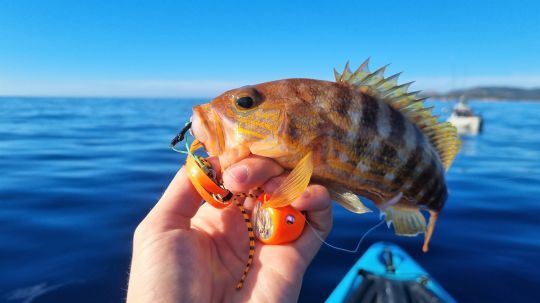
The weight of the bayrubber to use depends on several factors. First, the depth, a bayrubber that is too light will take too long to make contact with the bottom and will not fish if the drift is important. A bayrubber that is too heavy may be too large for some small fish, and its rapid descent rate will not make it fishable if not properly braked in the last 10 meters. Note that a sliding-head bayrubber will be much easier for a fish to grasp even if its weight is substantial.
Secondly, the weight must be adapted to the species sought, as a gilthead bream does not behave in the same way as a pike-perch, the choice must be made accordingly. Giltheads are often lifted 5 to 10 meters above the bottom and appreciate light rigs that go down slowly.
A pikeperch on the contrary, is very often between 0 and 4 meters above the bottom searching the substrate for preys. It will thus be necessary to privilege a relatively heavy bayrubber to tackle it on the bottom and to release beautiful touches on sandy-muddy zones.
